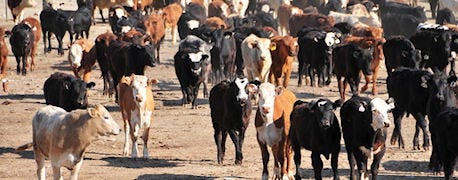January 9, 2015

The export of beef byproducts is important to cattle prices, says Tim Petry, North Dakota State University agricultural economist. They account for 10% to15% of the value of beef carcass.
"Beef byproducts include all edible and inedible items from harvested cattle that are not part of the dressed carcass. The hide is the most valuable byproduct and usually accounts for about one-half of the total byproduct value. Other beef byproducts include items such as tallow, livers, hearts, tongues, oxtails, tripe (stomach) and meat and bone meal," Petry says.

Beef byproducts buoy cattle prices
Edible byproducts often are referred to as "variety meats." Inedible byproducts are used for a wide variety of pharmaceutical, cosmetic, household and industrial products.
Many hides are exported to overseas customers to be processed into leather and leather products, so economic conditions around the world and the value of the U.S. dollar relative to other currencies impact byproduct values. Strong economies, with robust automobile and leather clothing sales, certainly help the demand for leather.
Some foreign customers prefer variety meats such as livers, hearts and tripe. Tongues are popular in Japan. In some countries, particular variety meats are preferred over traditional meat cuts and even used for medicinal purposes. In other countries, a variety meat may be a cheaper source of protein for lower-income consumers.
"Fed-steer byproduct values increased to record high levels in the first part of 2008 ($12 per hundredweight)," Petry says.
However, the U.S. and world economic crisis sent values plummeting to $6 per hundredweight by the end of 2008. Values began improving in late 2009 as economic conditions improved. Gradual improvement throughout 2010 resulted in record high values again at more than $12 by year's end.
Continued gradual improvement, fueled by strong export demand, has resulted in the current record high values of more than $16 per hundredweight. Supply and demand factors will affect beef byproduct values in 2015. Projected lower U.S. fed-cattle and cow slaughter, and continued strong export demand, should support byproduct values at near record levels again in 2015.
See NDSU's Spotlight On Economics for more information.
Source: NDSU Extension
You May Also Like




